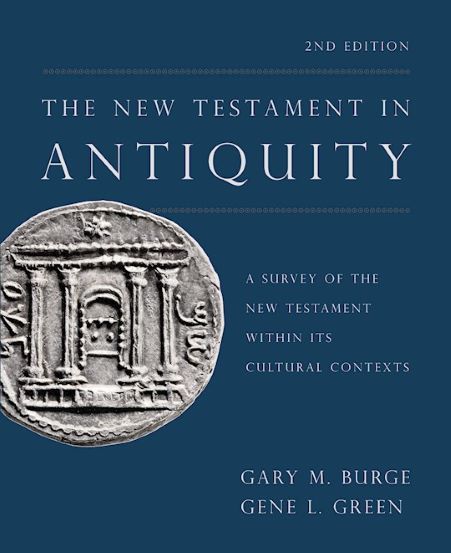Gary M. Burge and Gene L. Green
(2nd Edition). By Gary M. Burge and Gene L. Green. Grand Rapids, Michigan: Zondervan Academic, 2020. 623 pages. Hardcover. $59.99.

Reviewed by Adam C. Koontz on 08/18/2020
This reworked and expanded edition of a popular textbook is worth your attention but not your approbation. Any Bible student of any level of expertise can profit from the accumulated geographic, cultural, and historical knowledge between this book’s covers. How is the phrase “city set on a hill” (Matt 5:14)[1] related to the climatic zone in which Jesus grew up? How was an ancient Jewish tomb built into rock, and where in it would Jesus’ body have been laid? Do you know what the Gallio Inscription is, and would you like to see a very clear photograph and explanation of it? All these answers and many more like them are in this book.
On the other hand, you might be able to find answers to those questions with well-designed maps and illustrations through an Internet search, and you would not have to pay $59.99. A textbook like this one might be worth its salt if, in addition to the world of the New Testament on its own terms, it introduced the student to the theology of the New Testament on its own terms. One expects a book from an evangelical publisher to be interested in presenting the Bible on its own terms. Although the authors teach at two institutions historically associated with evangelicalism (Calvin Seminary and Wheaton College), evangelicalism isn’t what it used to be. The author of Colossians and Ephesians “purports to be Paul,” according to their assessment. The Bible is portrayed as historically interesting but also sometimes historically unreliable. This ambivalence about Scripture’s claims, not least its claims of authorship, has never been anything except corrosive to the church.
Strange to say, alongside these doubts about Scripture’s authorship is an unexplained, presumed respect for “scholars,” always referenced as an amorphous group who “question the authorship” or “doubt” some obvious claim of the biblical text. Paul’s letter to the Galatians has the “virtually unanimous” scholarly opinion that Paul was the author, but if it was a light thing to Paul that he should be judged by the Corinthians or any human court, how much less interest should we display in the anonymous cultural authority of scholars falsely so-called who doubt the Bible’s basic claims about itself? I did not come away from the book with any doubts about the Bible. This volume was by turns enlightening in its historical riches and boring in its oft-rehearsed academic doubts. I came away from the book doubting evangelicalism’s future without an authoritative, inerrant Bible.
[1] Unless otherwise noted, all Scripture quotations are from the ESV® Bible (The Holy Bible, English Standard Version®), copyright © 2001 by Crossway, a publishing ministry of Good News Publishers. Used by permission. All rights reserved.



